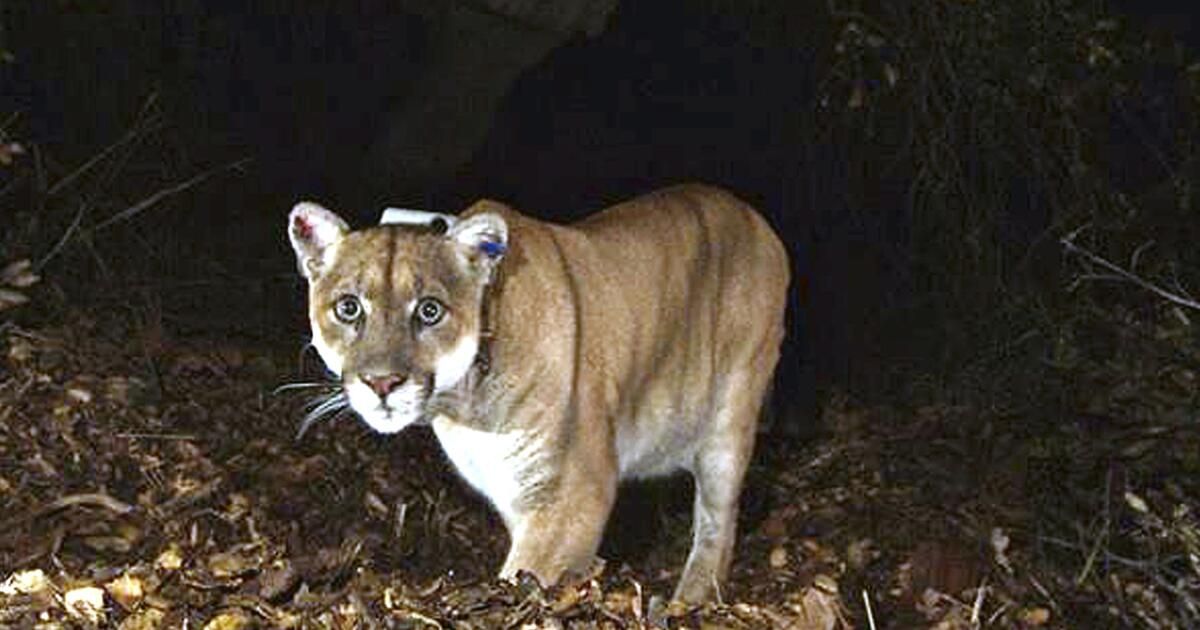After a cougar attacked a 5-year-old boy over the weekend, some commentators on social media criticized authorities' decision to kill the big cat and accused the boy's family of provoking the animal.
It was hard for some to understand why there wasn't another way to address the problem, given all the efforts to help Southern California's dwindling mountain lion population and the love Los Angeles had for its favorite feline, P-22.
“This is what happens when we are on their territory!” wrote one woman on Facebook.
“We couldn’t move the lion, we had to kill it! But that’s what we do: we destroy everything like a plague to make more space for more people,” wrote another.
But experts said the cougar's killing was likely the only responsible response after the feline lunged at the boy, who was at a designated picnic area with dozens of other people.
“It attacked a small child and we were concerned that if we didn’t remove it, it could attack and possibly kill another child,” said Patrick Foy, a spokesman for the California Department of Fish and Wildlife.
Foy pointed to a deadly attack in 2004 when a cougar killed a mountain biker in Orange County and then attacked and nearly killed a woman hours later.
People ride bicycles during a visit to Malibu Creek State Park in Calabasas on August 20, 2018.
(Mel Melcon/Los Angeles Times)
Foy also stressed that the attack was not the fault of the family or the boy.
“There are people who say we’ve moved into their habitat. Yes, that’s true, but a cougar that attacks a human… we don’t have a prison for cougars,” said Beth Pratt, California regional executive director of the National Wildlife Federation. “As much as it pains me, I think the authorities made the right decision in this case.”
Pratt, who says she is sometimes called “the cougar lady” and has jokingly referred to herself as the agent for the famous P-22 cougar, is by no means an advocate of culling as a priority. She believes everything possible should be done to protect cougars. But California is the most progressive state in the country when it comes to prioritizing wildlife, Pratt said.
In cases where the animal poses an imminent danger to humans, euthanasia is the only option, he said.
Sunday's attack was a clear example, Pratt said.
The 5-year-old boy was playing with other children near his family's picnic table when the cougar attacked him, according to officials with the California Department of Fish and Wildlife. The cat grabbed the boy and could have dragged him away, but the boy's father grabbed the cat and fought him off until he freed the boy, a family member told KTLA.
The puma remained in a tree until authorities arrived and “killed it with a firearm.”
Mountain lion attacks on humans remain extremely rare. Since 1986, only 24 attacks had been documented before Sunday's, according to the Fish and Wildlife Service. Four of the attacks were fatal.
“I’m definitely on the side of science defending animal rights,” Pratt said. “But on the other hand, when an animal attacks, authorities don’t have many options.”
One instance where Pratt disagreed with the decision to kill a cougar occurred in 2012, when Santa Monica authorities shot a cougar that became trapped in the Third Street Promenade shopping center.
“I was locked in and there were a lot more options,” Pratt said.
Authorities said the lion repeatedly tried to escape and that shooting it was a last resort.
In 2013, the Legislature passed a law requiring authorities to use nonlethal measures to control cougars, except in cases where they pose an imminent threat to humans.
“If a puma chases a person, [the California Department of Fish and Wildlife] “or other responding law enforcement has the authority to lethally remove the animal to protect public safety,” said Korinna Domingo, founder and director of the Cougar Conservancy.
In recent years there has been growing awareness of the plight of Southern California's mountain lions as they face danger from the forces of development, trafficking and pesticides.
A recent study estimated the total number of cougars at between 3,200 and 4,500 — thousands fewer than previously thought. The count was conducted by state and university scientists who used GPS collar data and genetic information from scat samples to model population densities in the Sierra Nevada Mountains, the Mojave Desert and Southern California’s mosaic of brush-covered and fire-depleted wilderness areas.
The California Department of Fish and Wildlife had for decades estimated the state’s cougar population at about 6,000, despite relentless vehicle crashes, wildfires and encroachment by land-hungry humans throughout their range, The Times reported in January.
P-22's stint in Hollywood made him a star on T-shirts and murals. He was captured and euthanized in late 2022, having been deemed too sick to return to the wild due to injuries and infection.












